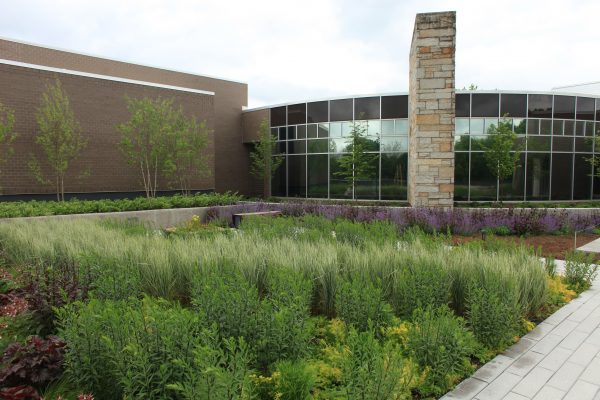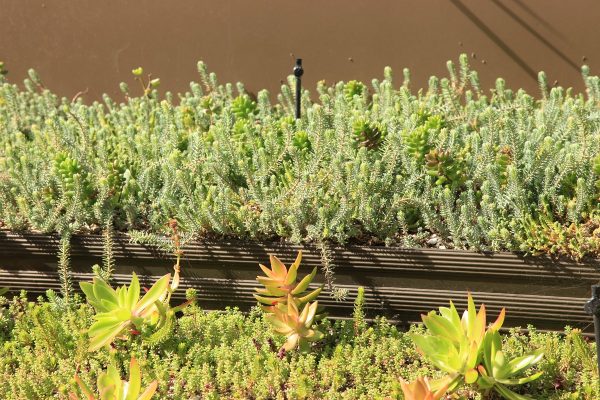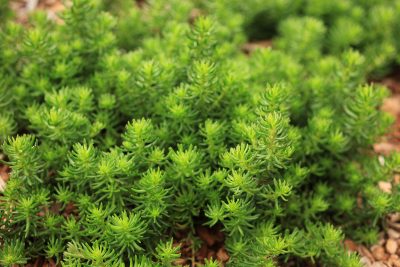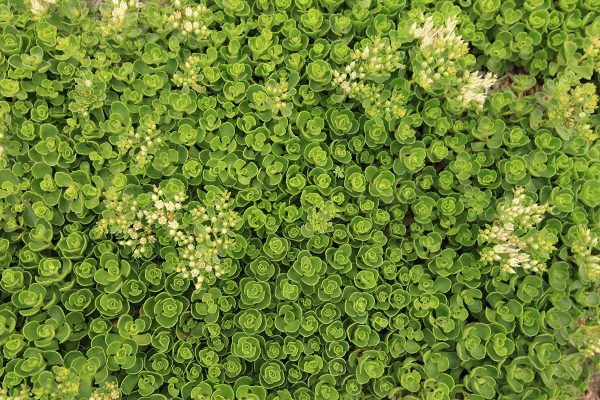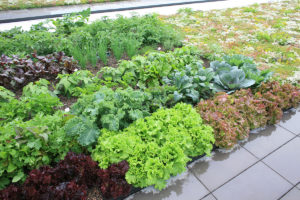RoofTop Proven™ Green Roof Plants
Green roof plants are not one-size-fits-all, and the individual requirements of each green roof design must be taken into consideration. Your LiveRoof® Licensed Grower is an experienced horticultural professional who will examine the particular needs of your project and assist in selection of the best plants to bring your design to life.
Some green roof companies also tout having a horticulturist on staff, but we have dozens, in different climates, most with decades experience growing plants for and in that local environment.
Climate Matters
Anyone who travels to different climate zones observes that typical landscape plants vary based on what is well-suited to the unique challenges of that environment.
On the roof, attention to local conditions is even more critical. For example, in Toronto, plants that can handle the rapid changes in temperature and long winters are a necessity. In much of Texas, a plant palette must handle summer’s prolonged heat, high nighttime temperatures, low precipitation rates and heavy humidity.
Plant Development
We strive to be the industry leader in developing—through breeding, careful selection and extensive testing—plants specifically suited to harsh green roof conditions. With dozens of introductions, we offer a unique palette of exclusive plants which are vigorous, hardy, and consistent in color, texture and performance.
When you design with our RoofTop Proven™ plants, you can more precisely control the appearance and performance of your green roof plants.
Lower Maintenance
When we select plants, we focus on longevity. The plants must be hardy with strong growth habits that deter weeds through dense soil coverage.
Using lean, preventative maintenance practices as prescribed in the LiveRoof Maintenance protocol, owners can expect to have beautiful, healthy green roof systems that stand the test of time.
Regardless of the meticulous attention to plant selection paid by LiveRoof Licensed Growers, there is no such thing as a maintenance-free green roof. Plants are living things and have basic requirements for survival.
Neglected green roofs, regardless of plant selection, location and design, are much more susceptible to stress from outside threats such as drought, weed encroachment, wind scour, pests and disease.
Frequently Asked Questions about LiveRoof Plants
Numerous vegetables, herbs, and select fruits (such as strawberries and melons) may be grown on intensive green roofs that receive frequent watering, have ample sunlight, and have proper soil.
Edible plants require sufficient nutrients to support their rapid growth cycle and the energy needed to bear fruit.
When growing produce on green roofs, a blend of organic soil and traditional green roof growing media yields the best results; however, the soil will need annual amendments to maintain volume and provide sufficient nutrition.
In the Lite and Standard systems, we only recommend plants which have extreme drought resistance through some means other than the root system. This means succulent, water-holding plants like Sedums, Alliums, Sempervivums, and Delospermas in the northern temperate regions, and similar species farther south.
The best LiveRoof plants will both store water and have a special type of metabolism called ‘Crassulacean Acid Metabolism’ (CAM). CAM plants are unique in that under drought conditions their stomates (leaf pores) are open at night rather than during the day, as is the case with most plants. CAM plants exchange gasses (oxygen and carbon dioxide) in the dark when it is cooler and less windy. CAM plants are up to ten times more efficient with water conservation than non-CAM plants.
In the Deep and Maxx systems, with irrigation, a broader plant palette is possible.
In all cases, consult with your local LiveRoof licensed representative for recommendations of the best plants for the climate.
Can I have a Biodiverse LiveRoof?
Biodiverse Plant Mixes
While sedums and other succulents make up the backbone of extensive green roofs (typically with 2 ½-4.25-inches of soil-depth) green roofs with 6-inch or greater soil-depth (intensive green roofs) can easily support a broader array of plants, and biodiversity in the plant and animal communities becomes very feasible.
Plants for Biodiverse Green Roofs:
Using the LiveRoof Systems for biodiversity is easily accomplished using the 6-inch deep LiveRoof Deep system. The same is true of the LiveRoof Maxx system with 8-inch soil depth (sometimes used to boost storm water absorption). And, occasionally biodiversity is accomplished using the LiveRoof Standard System, with 4.25-inch soil-depth. In all cases there may be Sedums or other succulents (such as Delosperma or Talinum) in the plant mixes, along with drought resistant native and non-native perennials and grasses.
Irrigation Requirements: Make no Mistake about It: Every biodiverse green roof will require a built-in irrigation system. This is because even the most drought resistant native and adapted perennials and grasses can extract only so much water from a 6-to-8-inch soil-profile. In nature, these same plants would send their roots down several feet in search of water. Not so on a rooftop. But… we get the water investment back in spades, with cooling savings (due to evaporative cooling) and beatification. The amount and frequency of irrigation will vary with the plant types, climate and season, and your LiveRoof grower can develop an irrigation specification and owner’s manual specific to the project.
Definition of Bio-diverse: The definition of biodiverse varies greatly; LEED has a definition of biodiverse as does Sustainable Sites. The city of Chicago accepts 30 individual species and Toronto requires the planting to span 4 plant families of at least 5 genera and 10 species (the 4-5-10 rule). The 4-5-10 rule also requires that half of the species be native to the eco-region and that at least 2-each of the species bloom during spring, summer, and fall…. and no more than 15 % of the plants be grasses or grasslike plants (such as sedges). The idea with such a mix is to:
- Have pollinator support from spring through fall.
- Prevent grass and grasslike species from taking over.
- Provide habitat for beetles, bugs, and plant-eating larvae, and therefore a food source for birds.
Commonly used plants for biodiverse plantings number in the hundreds, and your local LiveRoof Grower can work with you to develop your site-specific planting list. Biodiverse LiveRoofs vary from gardenlike (designed in patterns) to meadowlike (random) and are typically very beautiful and seasonally dynamic. We have provided hundreds of biodiverse plantings, and we love them all!


